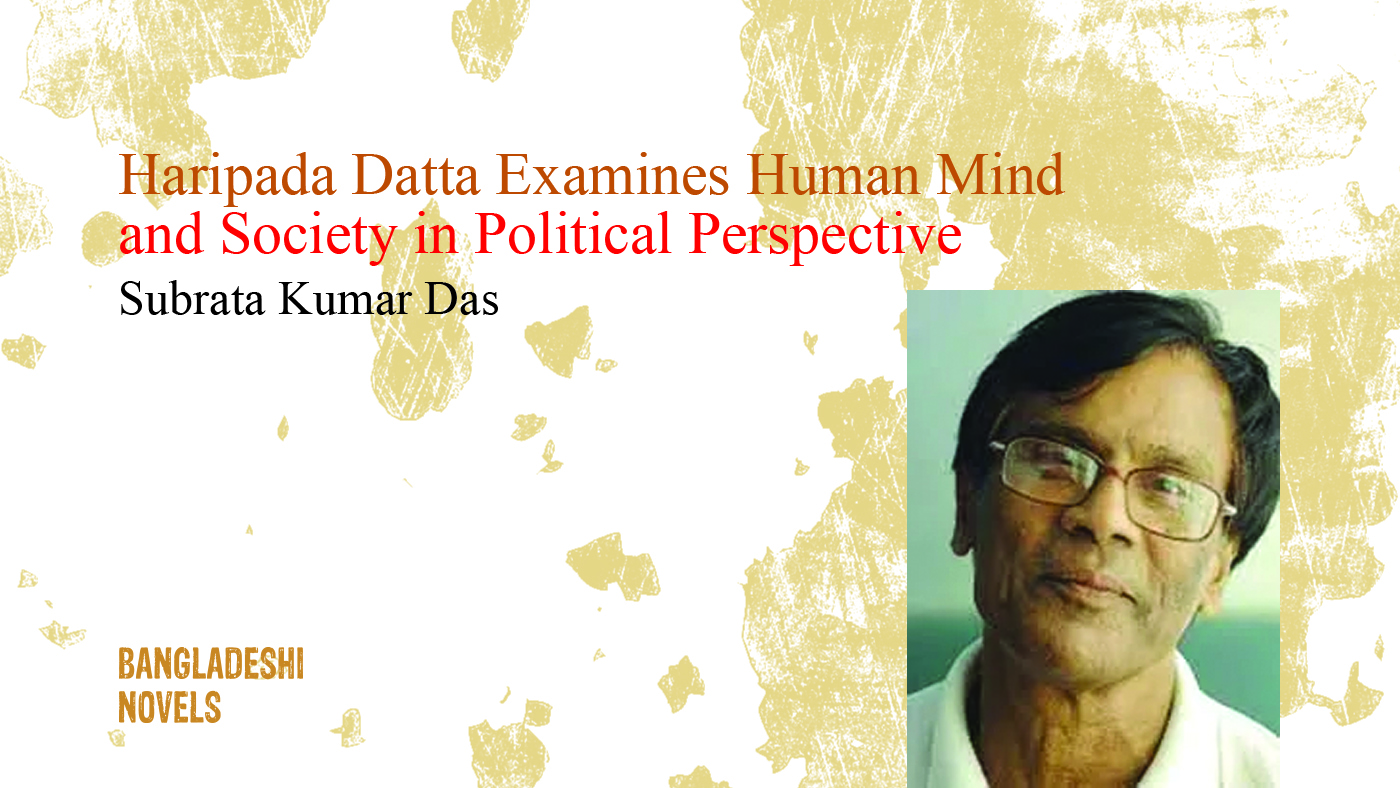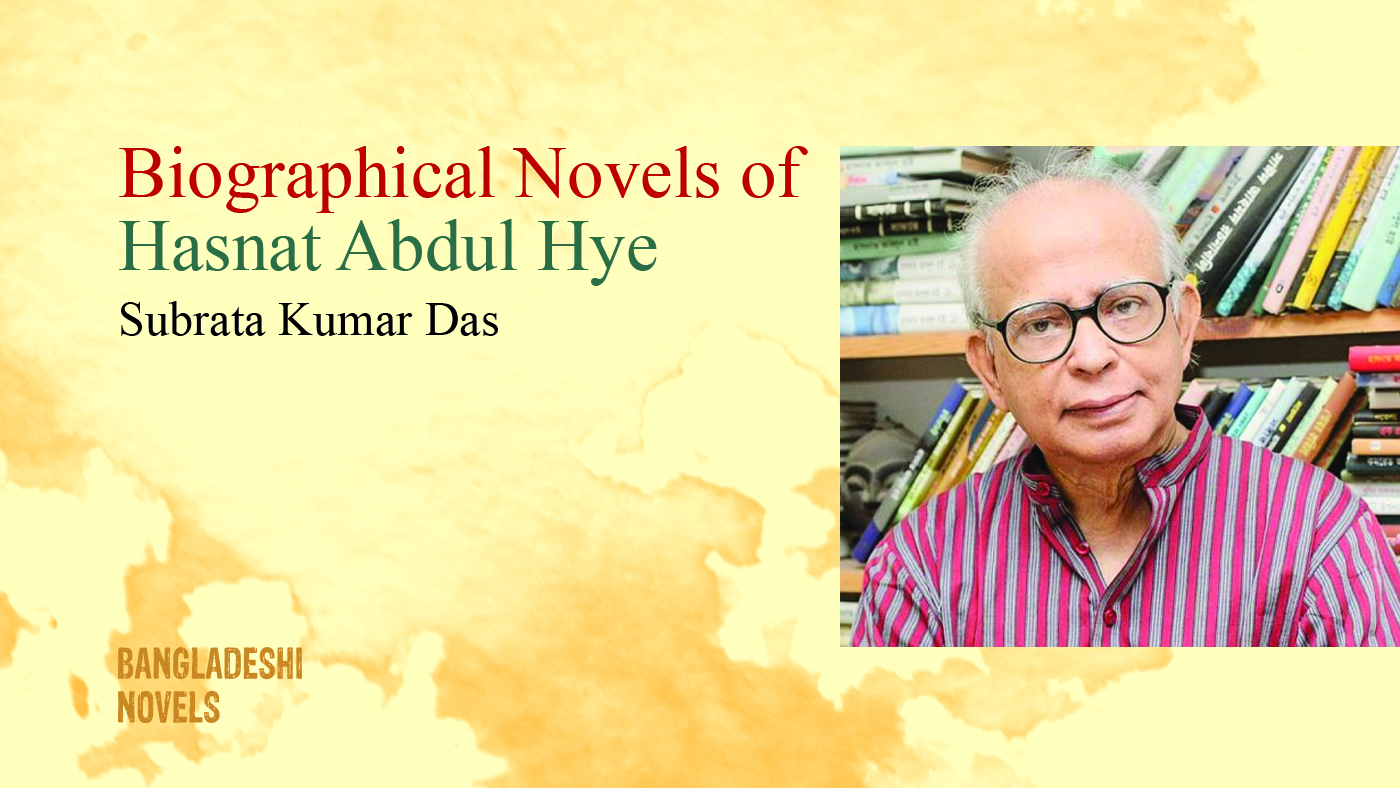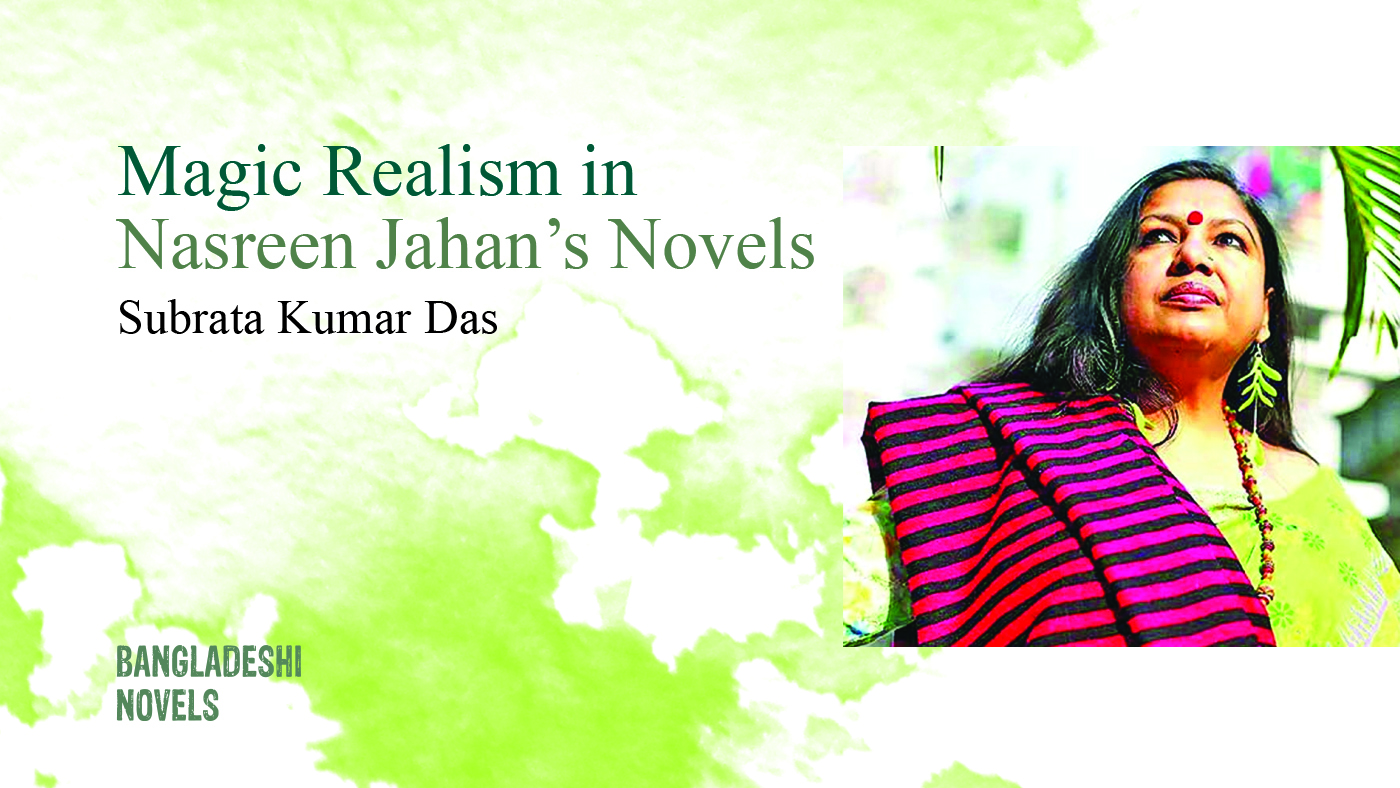
Among the contemporary fiction writers of popular track in Bangladesh, the name of Ahmad Sofa (1943-2001) is seldom included. In his thirty years of authorial life as a novelist, Sofa was never seen hankering after name and fame in a trivial sense. One of the well-known essayists, critics and poets Sofa always handles his novels with a much meticulous thought and plan. In every novel he articulates innovation in both form and content. Without novelty in thought and characterization, in technique and narration he never ventures for a novel. The trend of telling mere stories in novels never attracted him.
Surya Tumi Sathi (The Sun the Companion) was the first with which Ahmad Sofa launched his novelist career. The book was written in 1964-65 and in the year 1967 it was published. The next one Onkar (The Om), very much appreciated nationwide and even in West Bengal, was written in 1972 and published in 1975. In the year 1994 a different type of novel Alat Chakra (The Circle of Fire) came out of his pen, though the book was actually written ten years earlier. 1988 was the year in which Sofa wrote two novels, one was Aali Kenan, published in the same year, and the other Maran Bilash (Luxury in Death), printed in the following year. The novels, which came to the bookstores later on, are Gaavi Bittanto (Tale of a Cow, 1994), Ardhek Nari Ardhek Ishwari (Half Man Half Woman) and Pushpa Briksha Ebong Bihanga Puran (A Tale of Flowers, Plants and Birds), both published in 1996. Along with these eight novels Sofa is the author of hundreds of lyrics and poems, short stories and essays and columns. His Bangali Bushalmaner Mon is one of the most thought provoking and much hailed books in Bangladesh.
Any conscious reader would not fail to identify the two fairly long gaps in the period of his writing novels – the first was from 1973-1983 and the next was 1989-1994. Surya Tumi Sathi was composed in the first years of Sofa’s 20s. The whole story of the novel centres around Hashim, a youth whose father was a convert to a Muslim from a Hindu. The religious conflict of our society has been vividly painted in the book. The grandmother of Hashim Poddar Ginni rises above all orthodox rituals and thoughts of the dark society by taking the responsibility of Hashem’s newly born baby in Hashem’s house. Living in a society where a Hindu does not even take food from a Muslim neighbour, Poddar Ginni, an aged and ordinary minded pious woman does not hesitate to come to see the dead body of her grandson’s wife and thus humanity takes the upper hand above all other things. It is true that the whole story has been narrated in a very conventional way and nothing new has been introduced in the narrative technique but despite that the book has been acclaimed as a remarkable one in the annals of Bangladeshi novels for its characterization and the sincerity of the novelist to the analysis of social values.
But in Onkar, Ahmad Sofa comes out of the traditional tendencies of a novel writer. In this second novel he achieved his own individual qualities as a novelist in the context of form and content. The 24-page novel gives a pen picture of assimilation of an extraordinary theme in a simple story. In the story due to his father’s unwise activities, the narrator is trapped to marry a mute girl. Having no other alternative to save his own family, he has to do it. The mischievous father-in-law arranges for him a job also. In his town house in Dhaka his sister, who resides with him there, practises songs with a harmonium. Once it is discovered that his speechless wife herself is trying to make sounds with that musical instrument. All these make the narrator-husband more sympathetic to his wife and it inspires the woman more and more to speak. One day after the death of Asad in 1969 while a procession passes by their house, in her natural tendency the housewife comes out to the veranda and assays to voice like the slogans, but alas, it is only blood that flows out of her throat and she dies. In the novel the socio-political condition of the then society as well as the socio-familial environment has been delineated very minutely and skillfully.
The next novel of Ahmad Sofa is Alat Chakra. Liberation-time helpless Bangladesh in Kolkata is the focal point of the story. The story of the speaker Daniel and his lover-friend Tayeba works as a thread of the loosely related episodes, though in the same scenario. Under the shade of Daniel-Tyeba, the novelist possibly intends to bring out all the political and pseudo-political aspects of people in the then Kolkata, driven off from Bangladesh. Different opinions of different people about the liberation of Bangladesh, its possibility, its way to success have been moulded here. On December 3, 1971, when India declared war against Pakistan and the independence of Bangladesh became certain, the cancer patient Tayeba passes away in the blackout night. About the novel the other thing must be mentioned that the integrity that Onkar attained earlier seems a bit loosened here.
After only four years of Alat Chakra, Aali Kenan came into light. Ahmad Sofa created an existentialist character in the novel in a very true Bangladeshi context. The political scenes from Ayub Khan to Sheikh Mujib have also been portrayed vividly.
Death in Maran Bilash, as a comfort, is on a par with Aali Kenan. It is about the spontaneous talks of a minister at his deathbed. From 12:13 in the night to the dawn the minister opens his mind to his attendant cum political follower Moula Box. In these episodes the whole life of the minister has been pictured – from his boyhood to his maturity. All the misdeeds of his life as the minister are revealed here one after another. In a society where immorality is the only ladder for a politician to climb the top gets an exposure in this novel. The hateful activities of the minister include such misdeed like poisoning his younger brother, having sexual relationship with a woman of his mother’s age, burning the headmaster in his house with a communal attitude etc.
After his Onkar and Aali Kenan, Gaavi Bittanto is also a very significant novel that will get a permanent place in the history of Bangla novel. In a very satiric milieu Sofa has placed the supreme institution of our country – the Dhaka University. Making caricatures of the people of this highest education centre Sofa has tried to ridicule the whole society in general. In Gaavi Bittanto the author actually attempted to expose the so-called intellectuals of our society.
Sofa’s novels are generally small in size. Even the bigger ones like Alat Chakra, Gaavi Bittanto and Surya Tumi Sathi are of 129, 110 and 93 pages only. But surprisingly Sofa is always successful in making his creations in such small volumes. All his novels draw the attention of the reader for their compactness. Almost never the plots of his novels are loosened.
Concerning his language and form Sofa attained his best from the very beginning. In Surya Tumi Sathi the story is narrated in a third person narrative, the technique which he pursued in his later novels like Aali Kenan, Maran Bilash and Gaavi Bittanto. In his other novels Onkar and Alat Chakra he went for a first person narrative technique. But in novels excluding Alat Chakra the aspect that rolls on with immense success is his objectivity. It is, as if, from a distant place the author observes everything of his story – the characters and the incidents. Such honest and courageous observation is only possible for Ahmad Sofa, personally who is not a man of general track. Constant experimentation and novelty are the hallmark of all his works. When a new book of the author emerges, we find in it a new Ahmad Sofa coming alive and attractive as is seen in the context of his novel Pushpa Briksha Ebong Bihanga Puran.
William Wordsworth’s (1770-1850) attitude to nature provides his writings with a unique characteristic. In different phases of life, nature itself made noticeable impressions, which contributed a lot in moulding his spirit. On the other hand, Robert Frost (1874-1963) visualises a sort of similarity between himself and the nature around. All the novels of Bibhutibhushan Bandapaddhyay (1894-1950) deal with the close relationship between human beings and the surrounding natural phenomena. The soft human attitude has been delineated there with much sympathy. In the works of the above mentioned writers nature in a true sense is the flora. But in the novels of Thomas Hardy (1840-1928) nature has been pictured from a different point of view. In his novel The Return of the Native (1878), the protagonist becomes the landscape ‘Edgon Heath’ itself. Besides, nature also plays another role in literary pieces. Storm and calmness are symbolic presentation of various conditions of human minds. But in Pushpa Briksha Ebong Bihanga Puran, the approach of Ahmed Sofa is very distinctive. In this novel the writer takes the trees, flowers and birds for his children. The narrator-protagonist Ahmed Sofa nourishes and loves them from the core of his heart.
The novel begins with a very autobiographical attachment in which the whole story revolves. Later on gradually we begin to get that moments when the writer comes closer to nature, when he feels inclined to them.
In life, we come across some people, who love their pets as their kids but Sofa enjoys a different telepathy between them and himself. He wonders at the blooming of the flowers, the budding of the seeds. Their gradual and surprising growth astonishes him. He becomes bewildered seeing the oral expressions, especially the voice of the birds. All these incidents mark a deep impression on his life – on his thought and spirit. With pride, love and solemnity Sofa recalls all those bygone happiness of his life and pays great tribute to them.
The seventy-three-page novel begins with the shifting of Sofa’s residence. In the year 1993, he took his new rented apartment. The attached roof of it was a great award for him. His foster-son Sushil began the real plot of the story while cleansing the roof. There he saw some buds and showed them to Sofa. The love-bond of Sofa and the plants thus began to get language. In the first ten pages, Sushil does the other thing – he brings a Jhuti Shalik from Nilkhet and the episodes of Sofa and the birds thus began their journey. Afterwards, we get some stories in flashback, where Sofa’s attitude and attraction towards trees have been portrayed.
The bygone story begins with the tale of an apple seedling. In this plant, the author felt the existence of a living creature. All its growing-up amazed him. Once when the writer was shocked due to the sad news of a kith, he went near the plant and sat there. Suddenly he comprehended that the small plant began to caress him. To make sure his assumption, he went to the other side of it and astonishingly the little plant tilted to that side. In relation to this story, more tales begin to upsurge connected with plants. In this episode takes place the episode of children. Here we come to know that, along with a friend, Sofa started an elementary school for the little urchins of slum areas. There he experienced new realisation about the so-called innocence of children. In this part, we behold that children are not so innocent as we believe them to be. Rather, they are the products of their own environment. Surrounding milieu gives a new shape to their psyche.
The Juti Shalik mentioned earlier, generates the new story about birds. It opens, through flashback, an episode of Sofa’s previous personal experience on pet birds. A parrot that he domesticated in his university life marked a permanent impression on his mind. The story of Jhuti Shalik exposes more stories of birds like crows, sparrows, nightingales, hornbills etc. The fatherly attitude of the writer to these creatures softens readers’ minds as well. They no more appear to us like the non-human beings.
To evaluate nature surrounding us from a paternal point of view is an innovation in Bangla literature. Such an approach to nature was quite unknown to readers of Bangla literature. To the Bengalis, this perspective may not seem unfamiliar and for this very reason, this novel can arouse a deeper feeling in us. One can get back, through this book, the childhood memories of rural Bangladesh that seemed to have been disappeared due to quick urbanisation.
Necessarily, the novel comprises three episodes on flowers, trees and birds. But we realise that flowers do not get an outstanding framework. On the other hand, the episode of children forms a new and independent tale and inevitably demands the title of the novel as Briksha Shishu Ebong Bihanga Puran.







